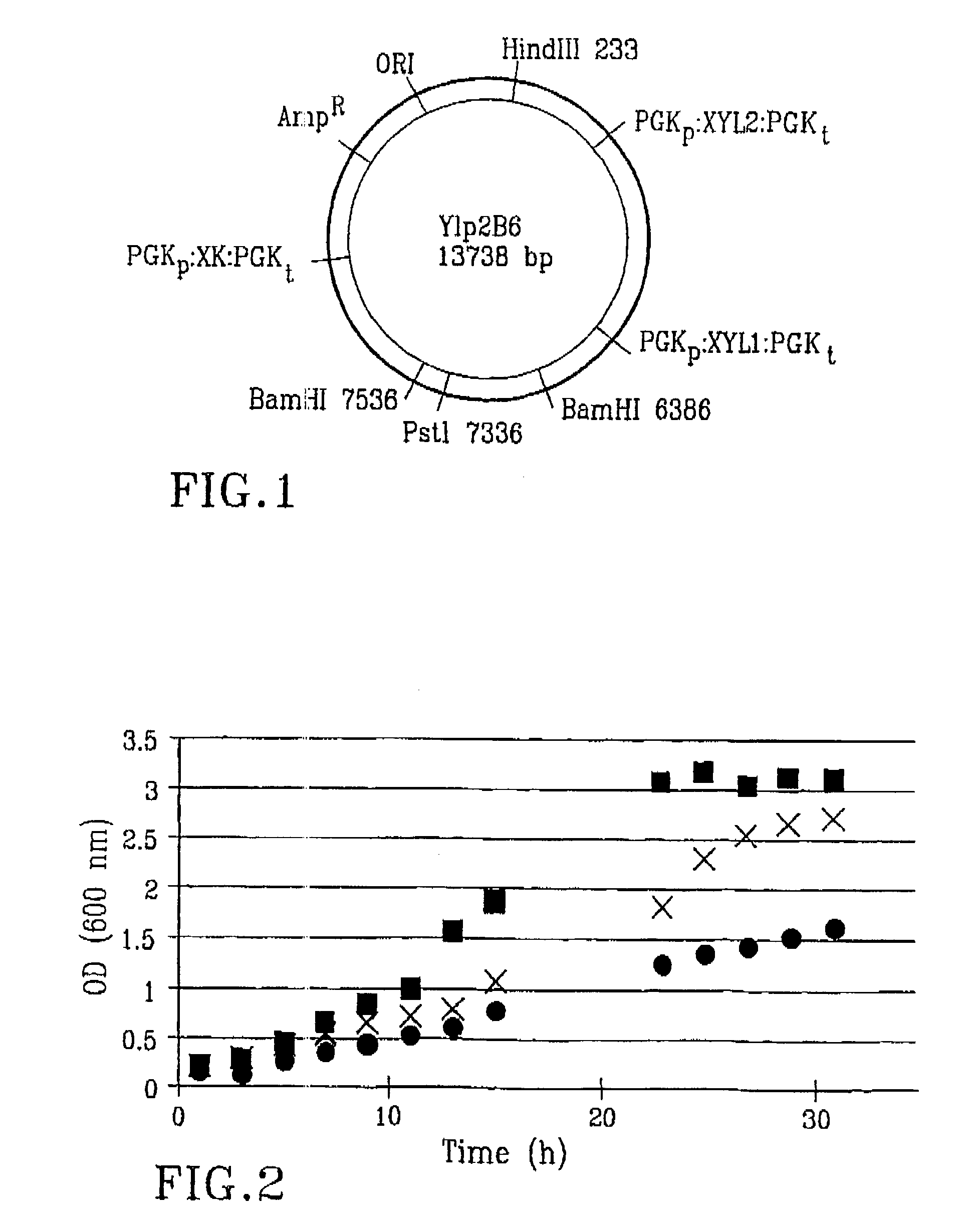Recombinant yeast for lignocellulose raw materials
a technology of lignocellulose and recombinant yeast, which is applied in the directions of enzymology, organic chemistry, transferases, etc., can solve the problems of inability to ferment the pentose sugars xylose and arabinos
- Summary
- Abstract
- Description
- Claims
- Application Information
AI Technical Summary
Benefits of technology
Problems solved by technology
Method used
Image
Examples
example 2
[0057]Strain and Culture Media:
[0058]The wine Saccharomyces cerevisiae strain USM21 (Kil+Gal+) (van der Westhuizen and Pretorius, “The value of electrophoretic fingerprinting and karyotyping in wine yeast breeding programmes”, Antonie van Leeuwenhoek 61:249-257, 1992; ZA 91 / 9818) was employed as the recipients for transformation experiments. Yeast strains were grown in complex medium consisting of 1% yeast extract, 2% peptone, 2% glucose (YPD) or 2% xylose (YPX). To perform the growth curves the strains were grown in synthetic complete (SCX) medium containing 0.67% Difco yeast nitrogen base without amino acids supplemented with 2% xylose as sole carbon source. All the media were complemented with ampicillin at a concentration 100 μg / ml to prevent bacterial contamination.
example 3
[0059]Transformation:
[0060]Saccharomyces cerevisiae was carried out according to Gietz et al. (“Studies on the transformation of intact yeast cells by the LiAc / SS-DNA / PEG procedure”, Yeast 11: 355-360, 1995).
example 4
[0061]DNA Techniques:
[0062]Plasmid DNA was prepared from Escherichia. Coli using the CTAB method (Del Sal et al., “A one-tube plasmid DNA mini-preparation suitable for sequencing”, Nucleic Acids Res. 16: 9878, 1988). Standard recombinant DNA techniques were performed essentially as described Sambrook et al. (“Molecular cloning: a laboratory manual, 2nd ed. Cold Spring Harbor Laboratory, Cold Spring Harbor, 1989, N.Y.).
PUM
| Property | Measurement | Unit |
|---|---|---|
| concentration | aaaaa | aaaaa |
| deposition | aaaaa | aaaaa |
| concentrations | aaaaa | aaaaa |
Abstract
Description
Claims
Application Information
 Login to View More
Login to View More - R&D
- Intellectual Property
- Life Sciences
- Materials
- Tech Scout
- Unparalleled Data Quality
- Higher Quality Content
- 60% Fewer Hallucinations
Browse by: Latest US Patents, China's latest patents, Technical Efficacy Thesaurus, Application Domain, Technology Topic, Popular Technical Reports.
© 2025 PatSnap. All rights reserved.Legal|Privacy policy|Modern Slavery Act Transparency Statement|Sitemap|About US| Contact US: help@patsnap.com

